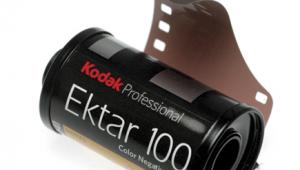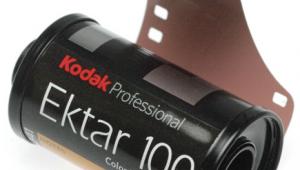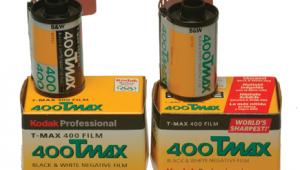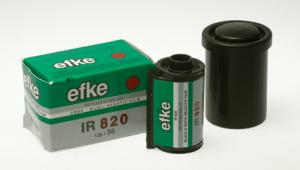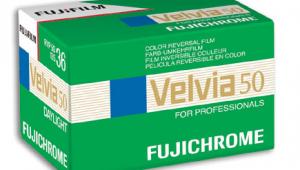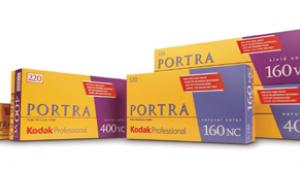The Holga Enlarger
Entry-Level, Yet Interesting Page 2
Being familiar with the camera, I wasn't quite sure what to expect. The enlarger arrived well packed in fitted styrofoam blocks. The instructions, translated from the original Chinese, are both entertaining and confusing, in turns. Fortunately, the assembly process will be pretty much obvious and straightforward to most buyers, especially those already familiar with the darkroom.
The inclined aluminum column bolts to the 16x19" composite baseboard via a plastic junction block that's considerably more robust than the "bent-tin" attachment of at least one "big name," entry-level enlarger that comes to mind. The metal lamphouse and chassis ride up and down the column by turning a large geared knob that engages a plastic track set into the front of the column.
These components are all reasonably sturdy, so I was at first perplexed by how jiggly the fully assembled enlarger was. I finally traced the problem to the four rubber feet that the baseboard rests on. They aren't solid (a screw and washer are inserted up through their centers) and the rubber is too soft. After removing the feet and weighting the baseboard, the improvement was dramatic. The simple fix would be to obtain more rigid feet, either rubber or metal, at a good hardware store.
The light source is a 75w PH211 tungsten enlarging lamp, which is supplied. To install it, just give the top half of the lamp housing a short twist (a bayonet channel is stamped into the metal housing) and lift it off the bottom half, exposing the lamp socket. A bit of lamp centering movement is possible by turning the socket assembly's finned exterior. The lamphouse is convection cooled and well sealed against light leaks. However, the lamphouse is single-walled, so avoid touching it during lengthy print composing and focusing operations, as it can get hot.
The lamp cord, which features an in-line on-off switch, appears lighter-duty than what most of us are accustomed to, although it's certainly up to the minimal challenge of the 75w bulb. The imprinting on the cord proclaims "A000383 WENZHOU DONGSU DIANQI YOUXIAN GONGSI AVVR 300/300V"; I like to think it translates to "UL Approved."
Vignetting Doubled
Most enlargers in this class that I've inspected previously employ
either a single condenser or even just a glass-diffusing disc to direct
the light. Upon opening the Holga's lamphousing, however, I was
surprised to discover double-glass condensers. While they cover 35mm and
6x4.5cm formats quite well, the corners vignette very noticeably with
6x6cm negs. As a companion to the Holga camera this is no problem at all,
as 6x6cm Holga negs will be pre-vignetted for you. The head also sports
a filter drawer, facilitating variable-contrast printing with individual
Multigrade or Polycontrast filters.
Focusing is by means of a friction drive, double-railed bellows. I wasn't
sure as to the bellows material, but the instruction sheet insists that
it's leather. The focusing knob delivers a satisfactory degree of
sensitivity, with no undue backlash. There's also a swing-away,
beneath-the-lens red filter.
The metal, glassless negative holder (prominently labeled "card
holder") accommodates 6x6cm negatives, plus 6x4.5cm and 35mm formats
with the addition of pin-located supplementary masks (supplied). It slides
into a slot in the lamphead; the very minimal light spill is less than
the pro unit that I use.
Lens Choices
The enlarger comes complete with the lens focal length of your choice:
with 50mm lens for 35mm negatives ($99.99); with 75mm lens for 6x4.5cm
and 6x6cm ($109.99); or with both lenses ($139.99).
The Arista brand lenses are made in Japan. Both feature three-element
construction, single coatings, smoothly operating click-stops, and f/3.5
maximum apertures, f/16 minimum. The barrels are black anodized aluminum
with engraved (!) markings. Lens performance is more than adequate for
the enlarger's maximum on-baseboard print size of approximately
8x10", but the lens mounting thread is standard 39mm, so upgrading
is straightforward should the urge strike. The stated minimum and maximum
magnifications possible on the baseboard with a given lens focal length
are as follows: 38mm, 4.0-14x; 50mm, 2.2-13x; 75mm, 1.0-7.8x; 80mm, 1.5-6.3x.
The lamphouse swivels 90Þ for making larger prints via wall projection,
although the limited 75w light output makes 11x14" or 16x20"
a practical maximum. Note that the bayonet fitting of the lamphouse halves
does not lock solidly tight, so be careful and support the top half when
tilting the head. You can also reverse the column for floor projection.
So there you have it. The Holga enlarger is a good value and a natural
companion to the Holga/Woca cameras, successfully continuing the quirky,
minimalist theme without being unusably primitive. It could also be a
"starter" enlarger candidate for those on a super-tight budget,
desirous of seeing whether or not they would enjoy the "wet"
darkroom experience without having to make a large financial commitment.
Within a few obvious limits, it can produce quite respectable results.
And, as a refreshing antidote for the pixelated precision of digital madness,
a Holga camera and enlarger can't be beat!
For more information, contact Freestyle Photographic Supplies, 5124 Sunset
Blvd., Hollywood, CA 90027; (800) 292-6137; fax: (800) 616-3686; www.freestylephoto.biz.
- Log in or register to post comments





